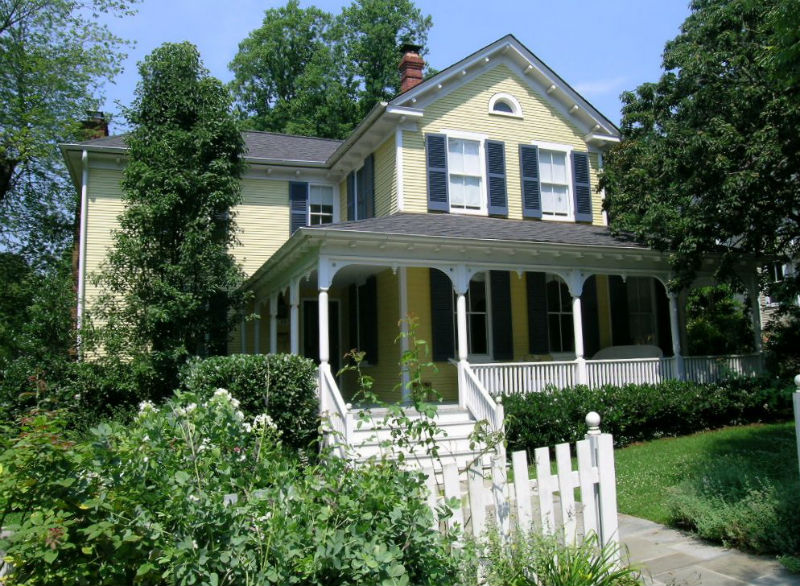Many older and historic homes are energy efficient, and can be made even more efficient through restoring historic features and completing an energy audit and following those expert recommendations. There are services and incentives throughout Maryland that can guide property owners towards a greener home without altering the historic character of the home.
INHERENTLY EFFICIENT
In some cases, historic homes built before advanced heating systems and air conditioning were designed with features that are inherently efficient. Some of these features include it’s original orientation and setting within the landscape, plans aligned for ventilation, double- and triple-hung windows with shutters, and roof hangs among other features. Use and/or restoration of these features could make a difference in the efficiency of a historic home.
FOCUSING YOUR ENERGY
First things first: the initial step to making your historic home is more energy efficient should be understanding where the home may be hemorrhaging energy – be it by losing conditioned air, inconsistent insulation, or options for more efficient systems – is to complete an energy assessment. There are several companies that can provide this professional service throughout Maryland, and the Maryland Green Registry maintains a list of green companies.
Common Causes of Loss of Efficiency
Windows aren’t typically the causes of your drafts, but instead insufficient insulation of opening like utility access and chimneys, and through attics. The US Department of Energy ranks the causes of air leaks in this order:
- Floors, walls, ceiling
- Ducts
- Fireplaces
- Plumbing penetrations
- Doors
- Windows
RENEWABLE ENERGY

Solar panels on a historic flat roof. Photo by Maryland Historical Trust.
Taking this a step further, historic home owners can also explore options for renewable energy for which there are tax-credit incentives. For officially designated historic structures, finding an unobtrusive location for solar panels may proof more difficult but if there are several options – and Marylanders can also choose to purchase green-sourced energy from many service providers.
INCENTIVES
Maryland Energy Administration: The Maryland Energy Administration manages grants, loans, rebates, and tax incentives designed to help attain Maryland’s Goals in energy reduction, renewable energy, climate action, and green jobs. Through the programs below, MEA helps Maryland residents, businesses, non-profits, and local governments implement energy efficiency upgrades and install renewable energy systems. More information: http://energy.maryland.gov/.
Maryland Heritage Structure Rehabilitation Tax: If you own a certified historic property in Maryland, you may have the opportunity to earn a state income tax credit on qualified rehabilitation expenditures. The focus of this program is to (1) assist in retaining and repairing historic features of the homes, but also, (2) to make historic homes comfortable, livable, and efficient, which also includes updating mechanical systems like HVAC that can include green energy. Find out more at: http://mht.maryland.gov/taxcredits.shtml.
ADDITIONAL RESOURCES
“Solar Panels and Tax Credits”
Maryland Historical Trust
“Preservation + Sustainability”
Preservation Green Lab
“Preservation Brief #3: Improving Energy Efficiency in Older Buildings”
National Park Service
“Weatherizing and Improving the Energy Efficiency of Historic Buildings”
National Park Service
“Energy Conserving Features Inherent in Older Homes”
US Department of House and Urban Development

